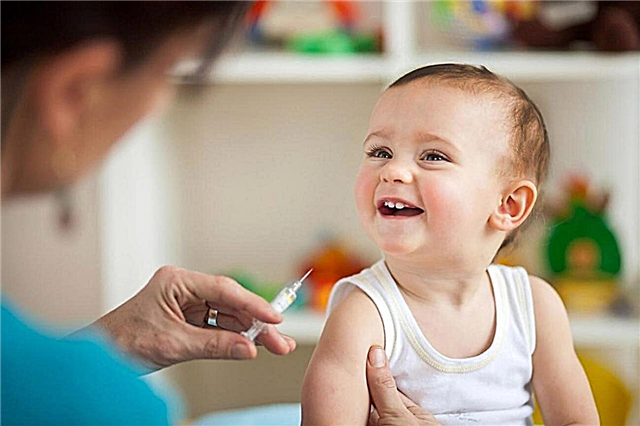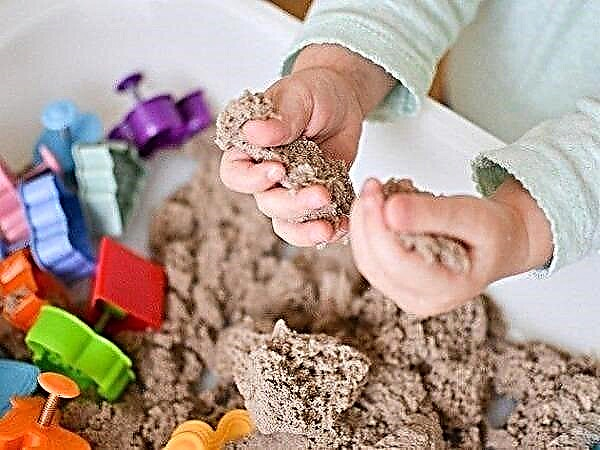
Head injuries are incredibly common in childhood. Falls, fights, jumps, visits to attractions - all this significantly increases the likelihood of getting a head injury. In addition, the children's brain is very vulnerable and is often prone to congenital and acquired ailments. Therefore, the issues of correct and timely diagnosis come first.
Echoencephalography or EchoEG is considered one of the most informative and safe ways to examine the brain in children. From this article you will learn how such a procedure is carried out, what it shows and how to prepare a child for such an examination.

What it is?
Echoencephalography combines two types of research - ultrasound and EEG. The doctor receives information about the state of the brain during EchoEG due to ultrasound and electrical impulses. Ultrasonic waves are sent to different parts of the brain, which tend to be reflected from different tissues and environments in different ways. The reflected ultrasound signal is converted into electrical and fixed on the screen of the device.
In newborns and children under one and a half years of age, the study is carried out by the method of neurosonography - an ultrasound scan is done with a conventional sensor through unclosed "fontanelles". For older children, whose “fontanelles” have already closed and the bones of the skull have become stronger, EchoEG is shown.


Echoencephaloscopy (EchoES) has been used in medicine since 1956 and, despite the constant improvement of research methods and equipment, it remains in great demand. As a result of exposure to ultrasound, followed by conversion of the signal into electrical, three types of data can be obtained:
- base complex - impulses reflected from the meninges and bones of the skull;
- final complex - impulses reflected from the inner surface of the skull;
- median M-complex - directly impulses of the body of the brain and its median divisions.
It is clear that the M-complex is the most important indicator. The rest of the pulses are measured to identify it. When the M-complex is displaced from the midline, it is said that the child has cerebral pathologies and disorders of the central nervous system.

Indications and contraindications
There are not so many contraindications for performing an EchoEG of the brain in children - the presence of fresh wounds and imposed surgical sutures on the scalp. If this is not the case, then the procedure is carried out to patients of any age and gender.
The examination is not included in the list of mandatory screening, and therefore it is carried out for medical reasons. These include:
- regular severe headaches in a child;
- attacks of dizziness, cases of loss of consciousness, loss of balance for no apparent mechanical reason;
- confused consciousness in a child, delirium;
- vomiting and nausea that are not due to food indigestion, poisoning, or gastroenterological disease;
- violation of coordination of movements of the limbs, head.
If the child fell and hit his head hard, the doctor, having found signs of traumatic brain injury, may well prescribe an echoencephalography to determine the degree of brain dysfunction and localization of the lesion.

Is it harmful?
EchoEG does not apply to harmful examinations, which include CT and partially MRI. Ultrasound does not harm the structures of the brain, does not disrupt the metabolism of neurons. Mom may not be afraid - modern medicine does not have data on the harmful effects of ultrasound on humans. Rumors about harm are greatly exaggerated and are built mainly on the basis that scientists do not yet have a large statistical base for studying the long-term effects of ultrasound. The method has been used for only a little over 20 years, and it takes much more time to collect such a base.
The harm that supposedly exists is mainly described on women's forums by people who are far from medicine and do not understand exactly what it is about. But the harm to which a mother can expose a child by refusing to undergo an EchoEG can be very serious and obvious: the lack of an accurate diagnosis will not give doctors the opportunity to prescribe the baby the correct and timely treatment, on which his health and life may directly depend.

How is it done?
To obtain an echogram, special equipment is used, installed in a separate small office with good light and sound insulation. Small children sit in the arms of mom or dad, large children can be diagnosed while sitting on a chair or lying on a couch with their heads raised.
A special hat with sensitive sensors is put on the child's head. Ultrasound is guided by two sources applied to the temporal region of the head above the ears. The study lasts no more than 20 minutes. For infants, it is desirable that they are asleep at the time of the examination.
The procedure is painless. The child will not feel any discomfort.

Training
Before the examination, you need to wash your child's hair. He must get to the doctor's office with clean hair. There is no need to come for an examination on an empty stomach. The child should be well-fed and calm.
If we are talking about a baby, be sure to feed him before starting the procedure. An older baby can be fed before leaving the house. If you are examined on an empty stomach, the lack of glucose in the blood, which appears in a state of hunger, can significantly affect the state of the brain, the results will be inaccurate, erroneous.
The day before the examination, exclude from the child's diet all products that can stimulate his central nervous system - tea, coffee, cocoa. Be sure to tell the doctor about what medications the child is currently taking, in what dosage. There is no need to stop taking medications before the examination.
Prepare the big child psychologically. Explain to him that nothing terrible will happen.

You can imagine the survey as a game, saying that the hat on his head will be exactly the same as that of the astronauts or superheroes before the important mission of saving the world.
Decoding
When decoding an echogram, doctors pay attention to the increase in the amplitude of echo pulsations, as well as to the median M-echo, the displacement of which, as we already know from the median values, may indicate the asymmetry of the hemispheres and parts of the brain. Normally, in a healthy baby, the M-echo shifts by no more than 0.5-1 mm. There are also areas with increased echogenicity and a ventricular index, which in a normal brain state in a child is approximately 1.8.


It is impossible to decipher the echogram of the brain on your own. This is done by specialists. But parents should know what pathologies can be identified by the results of such a study:
- tumors and neoplasms are usually accompanied by a displacement of the M-echo towards the healthy hemisphere, if the displacement is significant, malignant tumors may be suspected;
- if, after an injury, a child has an M-echo displacement of 4-8 mm, doctors suspect a brain hematoma; if the displacement exceeds the 7-8 mm mark, an urgent neurosurgical operation is prescribed to save the little patient's life;
- a slight displacement of the M-line (about 3 mm) usually indicates a brain contusion;
- a significant displacement of the M-echo can manifest meningoencephalitis, as well as its complicated form with the appearance of an abscess;
- with hydrocephalus (dropsy of the brain), the M-line splits into peaks, and the severity of these peaks indicates the severity of dropsy;
- in violation of cerebral circulation and hemorrhages in the brain, not only displacement is observed, but also the appearance of multiple areas of increased echogenicity.
In most cases, the results of an EchoEG scan require additional diagnosis. For example, CT or MRI to clarify the pathological condition and its causes.
You will learn more about how EchoEG is performed in a child from the following video.



